Proposed amendments to marks were found to be material alterations in the following decisions: In re Thrifty, Inc., 274 F.3d 1349, 61 USPQ2d 1121 (Fed. Cir. 2001) (finding amendment describing a mark as the color blue applied to an unlimited variety of objects to be a material alteration of the mark on the original drawing, which depicted the color blue applied to a building); In re Hacot-Colombier, 105 F.3d 616, 41 USPQ2d 1523 (Fed. Cir. 1997) (finding proposed addition of house mark to conform to mark on foreign registration to be a material alteration of the mark on the drawing filed with original application); In re Guitar Straps Online, LLC, 103 USPQ2d 1745 (TTAB 2012) (finding proposed amendment from "GOT STRAPS" to "GOT STRAPS?" to be a material alteration); In re Who? Vision Sys., Inc., 57 USPQ2d 1211 (TTAB 2000) (finding proposed amendment from "TACILESENSE" to "TACTILESENSE" to be a material alteration); In re Meditech Int’l Corp., 25 USPQ2d 1159, 1160 (TTAB 1990) ("A drawing consisting of a single blue star, as well as a drawing consisting of a number of blue stars, would both be considered material alterations vis-à-vis a drawing consisting of the typed words DESIGN OF A BLUE STAR."); In re Vienna Sausage Mfg. Co., 16 USPQ2d 2044 (TTAB 1990) (finding addition of wording "MR. SEYMOUR" to design mark to be a material alteration); In re The Wine Soc’y of Am., Inc., 12 USPQ2d 1139 (TTAB 1989) (finding proposed amendment to replace typed drawing of "THE WINE SOCIETY OF AMERICA" with a special form drawing including those words with a crown design and a banner design bearing the words "IN VINO VERITAS" to be a material alteration); In re Nationwide Indus., Inc., 6 USPQ2d 1882 (TTAB 1988) (finding addition of house mark "SNAP" to product mark "RUST BUSTER" to be a material alteration); In re Pierce Foods Corp., 230 USPQ 307 (TTAB 1986) (finding addition of house mark "PIERCE" to "CHIK’N BAKE" to be a material alteration).
Proposed amendments to marks were found not to constitute a material alteration in the following cases: Jack Wolfskin Ausrustung Fur Draussen GmbH & Co. KGAA v. New Millennium Sports, S.L.U., 797 F.3d 1363, 1370, 116 USPQ2d 1129, 1133-34 (Fed. Cir. 2015) (holding minor adjustment to the font and alterations to the design element of registered mark insufficient to change the commercial impression created by the mark); In re Innovative Cos., LLC, 88 USPQ2d 1095 (TTAB 2008) (finding amendment from "FREEDOMSTONE" to "FREEDOM STONE" not to be a material alteration); Paris Glove of Can., Ltd. v. SBC/Sporto Corp., 84 USPQ2d 1856, 1862 (TTAB 2007) (finding "AQUASTOP" depicted on one line in semicircular form not to be a material alteration of "AQUA STOP" depicted on two lines in rectangular form; the Board explained that "the commercial impression of the mark is dependent upon the literal terms AQUA STOP and not on the rectangular, semicircular or linear forms of display"); In re Finlay Fine Jewelry Corp., 41 USPQ2d 1152 (TTAB 1996) (finding "NEW YORK JEWELRY OUTLET" not to be a material alteration of "NY JEWELRY OUTLET"); In re Larios, S.A., 35 USPQ2d 1214 (TTAB 1995) (finding "VINO DE MALAGA LARIOS" and design not to be a material alteration of "GRAN VINO MALAGA LARIOS" with similar design); Visa Int’l Serv. Ass’n v. Life-Code Sys., Inc., 220 USPQ 740 (TTAB 1983) (finding amendment inverting the design portion of the mark not to be a material alteration).
When requiring a substitute drawing, the examining attorney must inform the applicant of the specific reason for rejecting the existing drawing and explain what type of amendment is needed to comply with the rules.
If the examining attorney requires a change in the drawing, the applicant must submit a substitute drawing, except in the limited circumstances discussed in TMEP §807.16 in which the USPTO will amend or correct a drawing.
If the examining attorney requires correction of a standard character drawing, the applicant may select "Standard Characters" in the Mark Information section of the TEAS Response to Office Action form and enter the proposed amended mark. If the required change is to a special-form drawing, the applicant may select "Special Form" in the Mark Information section of the TEAS Response to Office Action form and attach a digitized image of the substitute drawing to the form or submit a separate drawing page if the response is permitted to be filed on paper (see TMEP §301.01).
When the applicant voluntarily submits a substitute drawing, the examining attorney must determine whether the substitute drawing is acceptable. See TMEP §807.17 regarding the procedures for processing unacceptable amendments to drawings.
When a substitute drawing is submitted and accepted, the original drawing is replaced by the substitute drawing. The examining attorney must ensure that the automated records of the USPTO reflect the amended mark, and have the Trademark database corrected, if necessary. The original drawing remains in the record.
The examining attorney must also ensure that the mark drawing code is changed, if necessary. See TMEP §807.18 concerning mark drawing codes.
If the examining attorney requires correction of a standard character drawing, the applicant may submit a substitute drawing (see TMEP §807.15), or may request that the USPTO amend the drawing. If only a minor correction to a standard character drawing (such as deletion of the letters "TM") is required, the examining attorney may correct the drawing on his or her own initiative, or may require the applicant to submit a substitute drawing.
When correcting a standard character drawing, the examining attorney must create a new drawing page, and have the new drawing page scanned. The examining attorney must also ensure that the "Word Mark" field in the Trademark database is corrected.
When the correction involves a special form drawing, the examining attorney will delete matter from the drawing only if the matter to be deleted is sufficiently separate from the matter that is to remain. If the matter to be deleted is not sufficiently separate from the matter that is to remain, the applicant must submit a substitute drawing. If the examining attorney deletes matter from the drawing, the examining attorney must ensure that the corrected drawing is scanned, and that it appears in the Trademark database, before the mark is approved for publication or registration.
The examining attorney must also ensure that the mark drawing code is changed, if necessary. See TMEP §807.18 concerning mark drawing codes.
If an applicant submits an amendment to the drawing and the examining attorney determines that the amendment is unacceptable, the examining attorney must issue an Office action refusing to accept the amendment and advising the applicant that the amendment will not be entered, and that the previous drawing remains the operative drawing. If the unacceptable amended drawing has been entered into the automated records of the USPTO, the examining attorney must ensure that the automated records are modified to reflect that the previous drawing is operative.
The applicant must respond to the Office action to avoid abandonment. If the applicant submits arguments in support of acceptance of the amendment and the examining attorney determines that the amendment is still unacceptable, the examining attorney must issue a final refusal of the amendment, if the application is otherwise in condition for final action.
Standard Character Drawings. Standard character drawings are coded in the USPTO’s automated system as mark drawing code 4. Prior to November 2, 2003, typed drawings (see TMEP §807.03(i)) were coded as mark drawing code 1. Mark drawing code 1 is not available for applications filed on or after November 2, 2003. Applications that were filed before November 2, 2003, may be amended to mark drawing code 1, if appropriate for that drawing. Only mark drawing code 4 should be used for standard character drawings.
Special Form Drawings. Marks comprising only a design are coded as mark drawing code 2; marks comprising words plus a design are coded as mark drawing code 3; and marks comprising stylized letters and/or numerals with no design feature are coded as mark drawing code 5. All marks consisting of words, numerals, and/or diacritical symbols for which no standard character claim (see TMEP §807.03(a)) has been submitted are coded as mark drawing code 5.
Non-Visual Marks. "Drawings" of non-visual marks (see TMEP §807.09) are coded as mark drawing code 6.
A description of the mark must be included if the mark is not in standard characters. In an application where the mark is in standard characters, a description may be included and must be included if required by the trademark examining attorney.
A description of the mark must be included.
For applications filed on or after May 13, 2008, a description of the mark is required for any mark not in standard characters.
Therefore, the examining attorney must require a description of the mark if:
See 37 C.F.R. §§2.37, 2.52.
A statement that a term has no meaning in the relevant industry should not be entered as a description of the mark, nor should it be published. If such a statement is entered as a description of the mark, the examining attorney must ensure that the statement is deleted from the "Description of the Mark" field in the Trademark database and enter an appropriate Note to the File in the record. The document containing the information deleted from the Trademark database will remain of record for informational purposes. See TMEP §808.03 regarding printing of descriptions of the mark.
See TMEP §§809–809.03 regarding translation and transliteration of non-English wording and non-Latin characters.
Current Practice. For applications filed on or after November 2, 2003, the USPTO does not accept black-and-white drawings lined for color. 37 C.F.R. §2.52(b)(1); TMEP §807.07(a). Thus, the examining attorney should not require the applicant to enter a statement that the lining or stippling represents shading or is a feature of the mark, unless the examining attorney believes such a statement is necessary to accurately describe the mark.
See TMEP §§808.03 et seq. and §817 regarding printing of lining and stippling statements and other descriptions of the mark.
Previous Practice. Prior to October 30, 1999, an applicant who wanted to show color in a mark was required to use the USPTO’s color lining system. The color lining system required applicants to line their drawings using certain patterns designated for certain colors, and to provide a color lining statement describing where the colors appeared. The color lining system was deleted from the rule effective October 30, 1999; however, during a transitional period between October 30, 1999 and November 2, 2003, the USPTO continued to accept drawings that showed color by using this lining system. See 64 Fed. Reg. 48900, 48903 (Sept. 8, 1999), 1226 TMOG 103, 106 (Sept. 28, 1999). When an applicant submitted a drawing that included lining that was a feature of the mark and was not intended to indicate color, the applicant was required to submit a statement to that effect, so the record would be clear as to what applicant was claiming as the mark. Similarly, when an applicant submitted a drawing that included stippling for shading purposes, the applicant was required to submit a statement to that effect.
If a description of a mark is placed in the record, the description should state clearly and accurately what the mark comprises, and should not create a misleading impression by either positive statement or omission. Statements regarding how a mark is used (e.g., that the mark is not used in a particular color) are not appropriate and, if submitted, must not be included on the registration certificate. See TMEP § 808.03(g).
The description should describe all significant aspects of the mark, including both literal elements and design elements. Insignificant features need not be included in a description.
When a mark includes a large number of elements, they are not all necessarily significant. For example, background design elements can sometimes be considered insignificant if they do not change the overall commercial impression of the mark. In addition, it may be unnecessary to describe the placement of repetitive literal or design elements within a mark, as long as the description generally characterizes them and explains that the elements are repeated. Similarly, when a mark contains a substantial number of design elements, it may only be necessary to generally state in the description those elements that capture the essence of the mark. Please note that because of the requirement to describe where colors appear in the mark, marks that include color will generally have a more detailed description. 37 C.F.R. §2.52(b)(1). See TMEP §§807.07(a)–807.07(a)(ii) regarding requirements for color drawings.
If a mark contains both wording and design features, the description should describe both aspects of the mark in order to be complete. The rare exception is for wording that is (1) not significant to the mark; and (2) would not be searched (e.g., purely informational matter such as product weight, lists of contents, and business addresses). The better – but not mandatory – practice with descriptions of non-standard character marks that include wording is to indicate that the wording is "in stylized font."
Generally, if the applicant has not made a color claim, the description of the mark should not mention color, because a reference to color in the description of a non-colored mark creates a misleading impression. See TMEP §§807.07–807.07(g) regarding color. However, in some cases, it may be appropriate to submit a black-and-white drawing and a description of the mark that refers to black, white, and/or gray if the applicant states that color is not claimed as a feature of the mark. See TMEP §§807.07(f)–807.07(f)(ii) regarding applications that include mark descriptions that refer to black, white, or gray when there is no corresponding color claim.
If a trademark or service mark that is registered to an entity other than the applicant is used in the description of the mark, the examining attorney must require that it be deleted and that generic wording be substituted. Generally, it is inappropriate to use a registered mark in a description, because the mark indicates origin in only one party and cannot be used to describe a mark used in connection with goods or services that originate in a party other than the registrant. Cf. Camloc Fastener Corp. v. Grant, 119 USPQ 264, 265, n.1 (TTAB 1958) (noting that if applicant prevailed in opposition proceeding, it would be required to delete registered mark from the identification of goods set forth in the application). This prohibition against use of third-party registered marks in descriptions includes the use of registered trademarks that designate type fonts, such as ARIAL (U.S. Registration No. 2270853) or TIMES NEW ROMAN (U.S. Registration No. 1340165). The use of these type-font designations in a description is not critical to an understanding of the mark, and therefore unnecessary for an accurate and complete description. However, registered marks designating commercial color identification systems, such as PANTONE (e.g., U.S. Registration No. 1003494), may appear in connection with a color identifier in the description of the mark, because greater precision in identifying the color may be critical in accurately describing the mark and such third-party use is an intended use of commercial color-identification-system terminology.
A description cannot be used to restrict the likely public perception of a mark. A mark’s meaning is based on the impression actually created by the mark in the minds of consumers, not on the impression that the applicant states the mark is intended to convey. However, an examining attorney may defer to the applicant’s phrasing of a description, so long as the description is accurate and complete. For example, if an element in a mark could reasonably be characterized in more than one way, the examining attorney should accept the applicant’s selection of one characterization over the other in the description.
The following are examples of descriptions containing an appropriate level of detail:
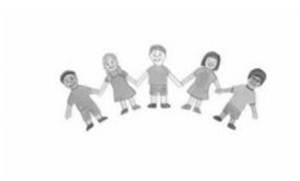
The mark consists of a group of children holding hands.
Note: The description would be incomplete if it merely stated that the mark consisted of children; however, it is not necessary to describe the individual details of each child.
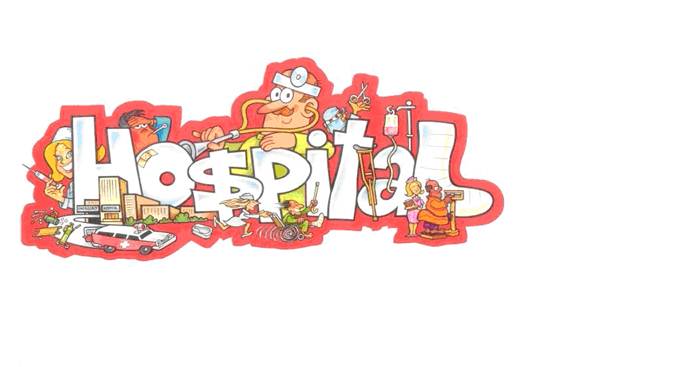
The mark consists of a red background; the stylized word "HOSPITAL" in white letters outlined in black with the letter "S" in the form of a dollar sign and letter "L" in the form of a cast; a man with red hair in a green gown with an orange and silver stethoscope and silver headband mirror; man wearing a blue cap, gown and mask with silver scissors; silver medical tree with white, pink, and gold intravenous pouch, fluid and tube; gray and gold crutch; nurse with yellow hair wearing pink clothing and brown clip board; orange and black scale with an orange man wearing purple pants and orange robe; nurse with yellow hair and white clothing pushing a wheelchair with a man in green clothing with white cast and gold cane; white and blue bed pan; yellow and black buildings and white signs with stylized words "EMERGENCY HOSPITAL" in black, and green vegetation; white and pink emergency vehicle with purple tires; a green air tank, orange stretcher, green golf club bag with white balls and pink clubs; nurse with yellow hair and blue clothing holding a white syringe with pink fluid; and an orange man dressed in blue with a white and red thermometer.
Note: This level of detail is necessary because the description must incorporate the color location statement (see TMEP §807.07(a)(ii)).
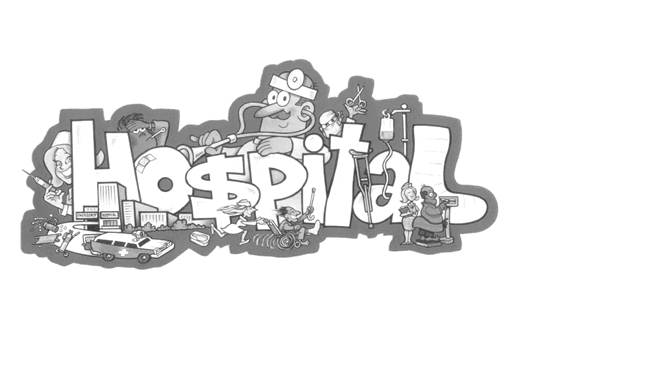
The mark consists of the stylized word "HOSPITAL" with the letter "S" in the form of a dollar sign and letter "L" in the form of a cast surrounded by a border containing a variety of images relating to a hospital including highly stylized images of doctors, nurses, patients, hospital equipment, an ambulance and building design containing the wording "EMERGENCY HOSPITAL".
Note: Since the mark is not in color, it is not necessary to describe every element of the mark. Instead, due to the large number of elements in the mark, it is only necessary to describe the wording in the mark and generally characterize the background elements.
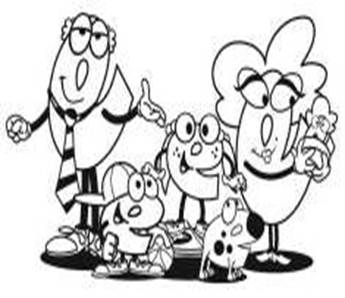
The mark consists of a group of stylized people each in the shape of a lowercase letter "E" and a fanciful dog also in the shape of a lowercase letter "E".
Note: The description would be incomplete if it did not indicate that the figures are in the shape of a lowercase letter "E"; however, it is not necessary to describe the individual details or placement of each figure.
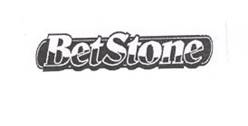
The mark consists of the stylized wording "BETSTONE" on a background design.
Note: The description would be incomplete if it did not indicate that the mark consists of more than wording; however, it is not necessary to specifically identify a nondescript common geometric carrier.
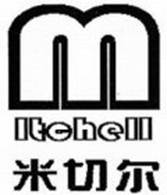
The mark consists of Chinese characters and the stylized wording "M ITCHELL".
Note: It is not necessary to include in the description of the mark the translation or transliteration of the Chinese characters. Though these elements would be searched, they are provided in the translation/transliteration statement.
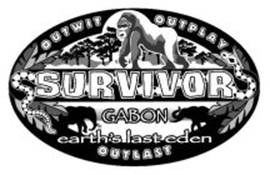
The mark consists of an oval design with the stylized wording "OUTWIT OUTPLAY" and "OUTLAST", the design of a stylized jungle containing a gorilla, elephants, and snakes and the stylized wording "SURVIVOR GABON EARTH’S LAST EDEN" within the oval.
Note: The description would be incomplete if it did not describe both the wording and design elements of the mark; however, it is not necessary to describe the placement of the elements within the oval.
See TMEP §808.03 regarding the examination procedure for descriptions.
After having determined that a description of the mark is required because the mark is not in standard characters, the examining attorney must then consider whether the description should be published in the TrademarkOfficial Gazette and included on the registration certificate. Accurate and complete descriptions may always be published. In other situations, the decision to publish – and to modify the description so that it is appropriate for publishing – depends on whether, in view of the nature or drawing of the particular mark in question, a description is necessary to clarify the mark for the public.
For example, a description must always be published if:
In rare instances, a description must be published when the mark consists of characters from the standard character set, but the characters are displayed in a manner that affects the meaning or significantly contributes to the overall commercial impression of the mark, for example, emoticons such as :) or :(. Note that a standard character claim is not acceptable where the characters form shapes or designs, such as emoticons (TMEP §807.03(c)).
If the examining attorney determines that a description provided by the applicant will not be published, notice to the applicant is not required. The examining attorney must either enter a Note to the File in the record stating that the description should not be published or issue an examiner’s amendment stating that the description will not be published. Generally, the examining attorney may use either option, but a Note to the File should be used where the examining attorney will issue an Office action regarding other matters. An examiner’s amendment without the prior approval of the applicant (see TMEP §707.02) may be used where it is unnecessary to issue an Office action or a regular examiner’s amendment regarding other matters.
The examining attorney must then either: (1) delete the mark description from the "Description" field in the relevant Trademark database; or (2) send the examiner’s amendment or an email instruction (where only a Note to the File was entered) to the LIE for appropriate action.
The foregoing procedures ensure that a description not intended for publishing will not be published. They further ensure that at the publication review stage, the Note to the File or examiner’s amendment reflects the determination not to print.
The following sections explain how to handle various scenarios relating to the description requirement.
If the application contains an accurate and complete description of the mark, no further action regarding the description is necessary and it will be published in the Trademark Official Gazette and included on the certificate of registration. Obvious misspellings, typographical errors, and redundancies in an otherwise accurate and complete description may be corrected by examiner’s amendment without the prior approval of the applicant (see TMEP §707.02).
The following are examples of accurate and complete descriptions:
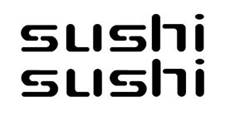
The mark consists of the words "SUSHI SUSHI" represented in stylized font.
Note: If an application containing this mark was submitted without a description, the description could be added by examiner’s amendment without the prior approval of the applicant (see TMEP §§707.02, 808.03(b)).

The mark consists of the wording "HEIDI.COM" in stylized font appearing below a stylized design of a girl's head.
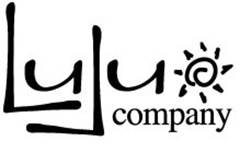
The mark consists of the word "LULU" in stylized font having a backwards second "L" adjacent to an abstract symbol of a sun and the word "COMPANY" in stylized font positioned underneath the second "U" and the sun.
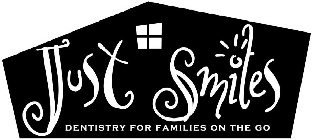
The mark consists of an image of a building with a window with four panes with the words "JUST SMILES" in a large, stylized font with lines above the dot in the letter "I" representing shine or glow and the words "DENTISTRY FOR FAMILIES ON THE GO" in smaller, block-letter font.
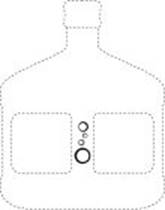
The mark consists of a series of circles stylistically representing a group of bubbles, such series being located on the handle of a water bottle. The outline of the bottle depicted in broken lines in the drawing is intended to show the placement of the mark when used and is not part of the mark.
Note: Any mark whose drawing includes broken lines must have a published description.
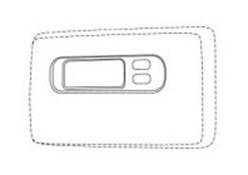
The mark consists of the three-dimensional configuration of a recessed window portion of a thermostat. The portion of the thermostat that comprises the mark is shown in solid lines in the drawing. The matter shown in broken lines in the drawing is not part of the mark. The dotted lines merely show the position of the mark in the configuration of the goods.
Note: Any mark whose drawing includes broken lines must have a published description.
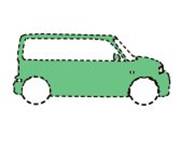
The mark consists of the color kelly green applied to the vehicles used in performing pest-control services. The matter shown in broken lines serves to show the placement of the mark on the vehicle and is not part of the mark.
Note: Any mark whose drawing includes broken lines must have a published description.
If the description is not submitted with the initial application, the examining attorney must ensure that a description is included in the record. Applications that include vague statements such as "the mark contains wording and a design," "the mark contains a miscellaneous design," and "the mark consists of words" should be treated as the equivalent of accurate but incomplete descriptions (see TMEP § 808.03(c)).
For marks that consist only of wording in stylized font, with no design element, the applicant’s completion of the "Literal Element" field in the application form may be accepted for purposes of compliance with the rule, even if an unacceptably vague statement or no information is entered in the "Description of the Mark" field. In these cases, where the description need not be published, the "Literal Element" information need not be copied into the "Description of the Mark" field in the relevant Trademark database.
Likewise, for §66(a) applications for marks that consist only of wording in stylized font, with no design element, the applicant’s completion of the "Textual Elements of Mark" field may be accepted for purposes of compliance with the rule. In these cases, where the description need not be published, the "Textual Elements of Mark" information need not be copied into the "Description" field in the relevant Trademark database.
Similarly, in any application for a mark that includes color, the applicant’s provision of a color location statement (either in the original application or in response to a requirement) may be accepted for purposes of compliance with the rule. A color location statement provided in the initial application will automatically appear in the "Description" field in the relevant Trademark database and must remain there for publication.
Where an Office action or regular examiner’s amendment is otherwise unnecessary, in the following situations the examining attorney may enter a description by examiner’s amendment without the prior approval of the applicant (as with any examiner’s amendment, the examining attorney is thereby providing the applicant with notice and an opportunity to disagree):
See TMEP §707.02.
The following are examples of descriptions that may be entered by examiner’s amendment without prior approval of the applicant:
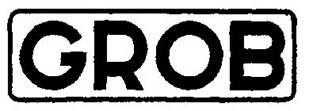
The mark consists of the stylized wording "GROB" within a rectangle.
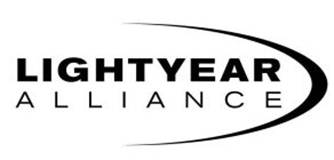
The mark consists of the stylized wording "LIGHTYEAR ALLIANCE" with a curved line to the right of the wording.

The mark consists of the stylized wording "GSC PARTNERS" with a curved line between "GSC" and "PARTNERS".

The mark consists of the stylized letters "P" "A" "C" "T" each within a shaded circle and the stylized wording "PURE ADVANCED COSMETIC TECHNOLOGY" underneath.
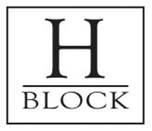
The mark consists of the stylized wording "H BLOCK" within a square with a horizontal line between "H" and "BLOCK".
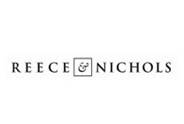
The mark consists of the stylized wording "REECE & NICHOLS" with the ampersand within a square.
In the foregoing examples, a description is necessary to comply with the requirements of the rule, but need not be published in the Trademark Official Gazette or included on the registration certificate. In such cases, the "no-call" examiner’s amendment should neither be sent to the LIE nor entered for printing by the examining attorney. Where publication of the description is unnecessary, the examiner’s amendment must indicate that the description will not be published in the Trademark Official Gazette or included on the registration certificate. This indication in the examiner’s amendment ensures that at the publication review stage, the description is not mistakenly entered for publication.
On the other hand, where an Office action or examiner’s amendment regarding other matters is necessary, a description should be required in the Office action or entered by examiner’s amendment. If a response to an Office action requiring the description fails to include a description but resolves all other issues, and one of the special situations set out above applies, the examining attorney may do a "no-call" examiner’s amendment at that time. If all other issues have not been resolved, the requirement for a description must be maintained or made final, as appropriate.
For marks that include a design element of any kind that are not covered by the special situations set out above, the examining attorney must either issue a requirement for the description, or enter a description by examiner’s amendment, with the prior approval of the applicant. Once a description of the mark is received in response to an Office action or through an examiner’s amendment, the examining attorney must follow the procedures set forth in TMEP §§808.03(a) and 808.03(c)–808.03(d) (i.e., determine whether the description is accurate and complete, accurate and incomplete, or inaccurate, and proceed accordingly).